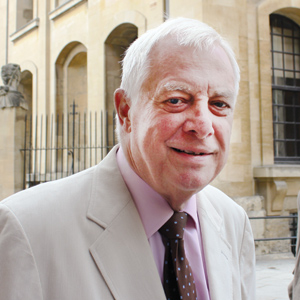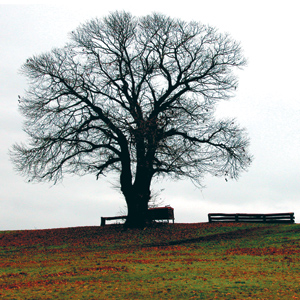London’s Street Trees: A Field Guide to the Urban Forest
Paul Wood
(Safe Haven, 192 PP, £12.99)
Tablet Bookshop Price £11.70 • Tel 01420 592974
The Long, Long Life of Trees
Fiona Stafford
(Yale University Press, 296 PP, £16.99)
Tablet Bookshop Price £15.30 • Tel 01420 592974
If I were a doctor, I would prescribe everyone a tree – to plant, to tend, to water, to clean the air, to summon birds and bees, to bring people together, to give time to stand and stare, to fall in love with. Because I can’t do that, then I would advise them to read London’s Street Trees: A Field Guide to the Urban Forest. This pocket-sized book is a love song to the author’s favourite trees currently gracing the streets of London. There is a bewildering variety: from the mulberry of Lewisham, whose rich, ripe fruit turns the branches black in August; to the Highgate handkerchief trees, whose dazzling white flowers wave at passers-by in May; from the ginkgos of Earls Court that turn a golden yellow in autumn; to the Persian ironwood of Peckham whose foliage is a carpet of variegated purple and yellow.
Alongside the photographic directory, the guide also contains fascinating information: magnolias, like those growing on Herne Hill, are from such an ancient species that they were on the planet before bees; the honey locusts of Lewisham, despite their sweet name, have “weapon grade” thorns that could easily put your eye out; the nettle trees of Shepherd’s Bush do not sting.
Reading this book gives you a wonderful sense of strolling the streets with the author and stopping to chat about each tree. Indeed there are a number of guided walks at the back. But Paul Wood (yes, that’s his name!) doesn’t just deal in individual trees species, he also shares intriguing facts about the other half of an urban forest – the planters. One human hero is Ada Salter: a Quaker, socialist reformer and trade unionist who became Mayor of Bermondsey in 1922. Dedicated to fighting inequality, she cleared the slums and brought trees to the previously naked borough. By 1930 she had planted 7,000 of them, lining the streets with the delightful ghetto palm or tree of heaven. A statue of her, spade poised, stands in Bermondsey, but if you want to see her legacy then you’ll have to be quick. Trees of heaven have a relatively short lifespan and Ada Salter’s gift to Bermondsey is now beginning to succumb to its age. Fortunately, modern urban foresters at Hackney Council are following in her spadework. A decade or two ago, Hackney had very few street trees; now “it’s hard to see where any more could be crammed in”. The borough doubles as an arboretum, with its almonds, wild services, black poplars and dawn redwoods.
According to a UN definition of tree density, London, with its 8.4 million trees, is a forest, and this book is your guide. The trees are as wonderfully diverse as the multi-ethnic population, and just as full of stories and gifts.
The Long, Long Life of Trees is another interesting contribution to our growing national love affair with trees. A species-by-species account, it describes the folklore and history of some of our most common trees. There is much to discover. For instance, the sycamore: ever since singing “Come Down Zacchaeus, Down from the Tree” at primary school, I’ve always been fascinated by the logistics (and drama) of Zacchaeus managing to climb a sycamore. Sycamores are cathedral-sized, while Zacchaeus was a small man. With the help of Fiona Stafford’s book, the mystery is solved. Zacchaeus’ tree wasn’t a sycamore after all, but the more modest ficus sycamorus or sycamore fig.
As well as listing how poets and artists like Constable felt about trees, this book also highlights the exploits of such heroes as Roger Jefcoate, “the phantom tree planter”, whose aim is to plant black poplars wherever and whenever he can. Next time you’re driving through Milton Keynes, have a look for the black poplar that he has planted on one of the roundabouts. What a good idea. If London is a forest, then why not plant our roundabouts and roadsides into wooded glens and Constable paintings? Certainly, the cumulative effect of both these books is to make the reader reach for a spade and join in with the good work themselves.



